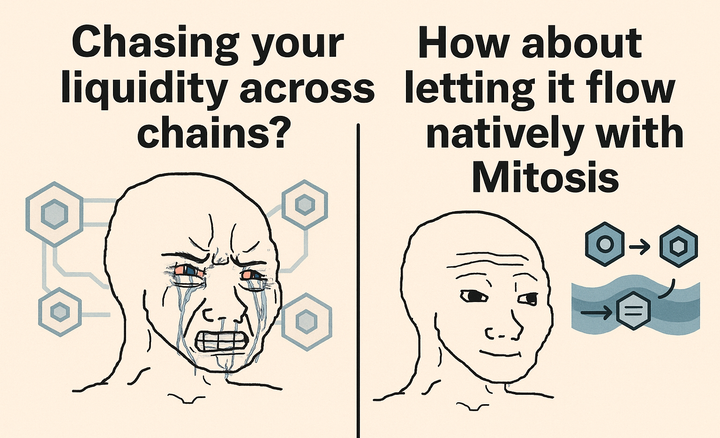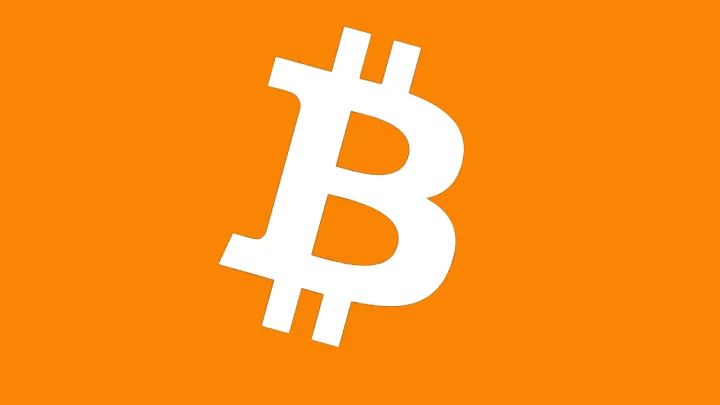The Future of DeFi Liquidity: A Deep Dive into Mitosis

Introduction
Liquidity in DeFi has long been plagued by inefficiencies that make markets rigid, inaccessible, and unfairly skewed in favor of large investors. Mitosis changes the game by introducing programmable liquidity, transforming DeFi liquidity positions into dynamic financial instruments that can be optimized, traded, and utilized across multiple applications.
This article explores Mitosis’ innovations, breaking down its complex mechanics while making them accessible to both seasoned DeFi users and newcomers. By the end, you’ll understand why Mitosis is a necessary evolution in DeFi liquidity management and how it democratizes access to lucrative opportunities.
Understanding the Problems in Traditional DeFi Liquidity
Before we discuss how Mitosis changes the game, let's examine the existing issues in DeFi liquidity provisioning:
- Static and Illiquid Positions: When liquidity is provided to a protocol, it often remains locked, making it difficult for users to reallocate or optimize their capital efficiently.
- Unequal Access to High-Yield Opportunities: Large investors and institutional players gain preferential access to high-yield deals through private arrangements, leaving retail participants with fewer and less lucrative options.
- Lack of Programmability: Liquidity positions in traditional DeFi setups are rigid and cannot be repurposed beyond basic yield farming or lending strategies.
Mitosis solves these challenges by introducing programmable liquidity, allowing users to dynamically manage their liquidity positions across different financial opportunities.
How Mitosis Works
Mitosis is built on a cross-chain liquidity framework that transforms liquidity positions into tradable and composable assets. It achieves this through a systematic process:
1. Deposit & Tokenization
When users deposit assets into Mitosis Vaults across supported blockchain networks, they receive Vanilla Assets on the Mitosis Chain that represent their deposits. These Vanilla Assets serve as the base layer for liquidity management.
2. Participation in Liquidity Strategies
Users can then allocate their Vanilla Assets into one of Mitosis' two liquidity frameworks:
- Ecosystem-Owned Liquidity (EOL): A collective liquidity strategy where deposits are managed through governance voting, allowing participants to influence how capital is allocated.
- Matrix Framework: A curated liquidity program where users commit funds to specific yield-generating campaigns based on pre-determined terms.
When assets are deployed into these strategies, they generate miAssets (for EOL) or maAssets (for Matrix), which act as position tokens representing users’ stakes in the strategies.
3. Programmability and Liquidity Optimization
Unlike traditional liquidity positions, Mitosis position tokens (miAssets and maAssets) are fully programmable. This means they can be:
- Traded on secondary markets
- Used as collateral in lending protocols
- Split into principal and yield components for structured financial products
- Combined with other DeFi strategies to create new yield opportunities
4. Cross-Chain Settlement & Efficiency
Mitosis ensures that liquidity activities across different chains remain synchronized. The protocol implements automated settlement mechanisms that track deposits, rewards, and returns, ensuring accurate distribution of gains without manual intervention.
Why Mitosis is a Game-Changer
- More Efficient Liquidity – No more idle capital. Users can optimize their positions dynamically.
- Fair Access to High Yields – Institutional-grade opportunities are available to all users, not just large investors.
- Cross-Chain Flexibility – Assets can be moved and utilized across different blockchains seamlessly.
- Enhanced Financial Engineering – Position tokens can be structured into advanced financial products for greater yield generation.
Conclusion
Mitosis redefines the way liquidity functions in DeFi. By transforming rigid liquidity positions into programmable financial assets, it opens up new opportunities for both retail and institutional users. As the DeFi ecosystem continues to grow, innovations like Mitosis will play a crucial role in making decentralized finance more efficient, accessible, and profitable for everyone.
If you’re looking to make the most of your liquidity without being locked into outdated models, Mitosis is the future.



Comments ()